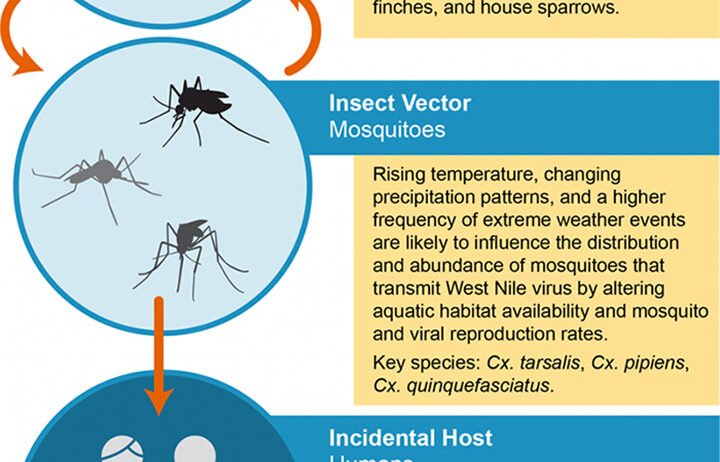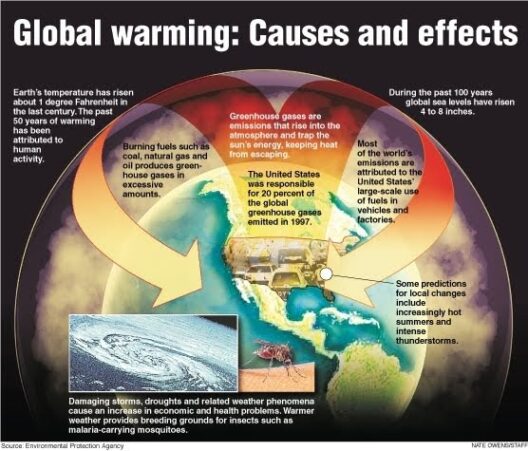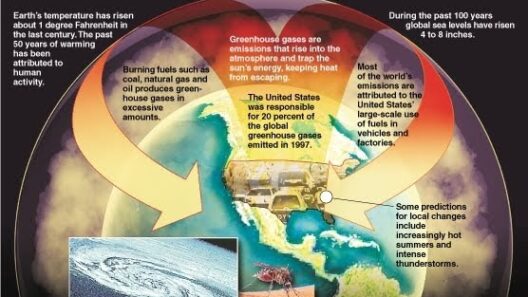Global warming, an unprecedented phenomenon influencing the Earth’s climate, presents multifaceted repercussions on ecosystems, including the health of animals and the viability of crops. As temperatures rise due to anthropogenic greenhouse gas emissions, an alarming hypothesis emerges: can global warming facilitate the proliferation of diseases that threaten not only animal populations but also agricultural productivity? This inquiry, rippling through the scientific community, prompts us to reassess our understanding of environmental interconnectivity.
Rising global temperatures catalyze various ecological imbalances, creating a cascade of effects that can augment the transmission of zoonotic diseases—those which jump from animals to humans. These pathogens thrive in environments that become increasingly hospitable due to warmer climates. For example, altered precipitation patterns can result in heightened humidity and more favorable conditions for the survival and reproduction of vectors like mosquitoes and ticks, notorious carriers of diseases such as West Nile virus, Lyme disease, and even avian influenza.
Moreover, we must consider the downward spiral of biodiversity loss. As species migrate towards cooler habitats, they are often forced into closer contact with human populations and domestic animals. This proximity can facilitate the transmission of diseases across species barriers. Habitat degradation and fragmentation associated with climate change further exacerbate these interactions, as remaining wildlife becomes more susceptible to infections that can devastate both animal and crop health.
On the agricultural front, global warming plays a dual role in fostering plant diseases. Warmer temperatures may enhance the proliferation of fungi, bacteria, and viruses that can significantly hamper crop yields. Increased atmospheric carbon dioxide (CO2) levels can lead to accelerated plant growth, but this can also increase susceptibility to diseases that flourish in hotter conditions. For instance, the incidence of fungal diseases, such as wheat rust, has surged in regions experiencing rising temperatures. Consequently, farmers may face diminishing returns on their harvests, leading to food insecurity.
The geographical redistribution of pests is another dire consequence of climate change. Many insects, resilient in the face of fluctuating conditions, are expanding their habitats into previously inhospitable territories. The movement of pests into new regions can challenge existing agricultural practices, compelling farmers to adopt new management strategies, which often involve the use of chemical pesticides. This, unfortunately, engenders a cycle of environmental degradation, as these chemicals can contaminate soil and waterways, consequently affecting aquatic ecosystems and wildlife.
Furthermore, the stressors induced by climate change can weaken the immune responses of both animals and plants. High temperatures, for instance, can render livestock more susceptible to infectious diseases and reduce their productivity. Plants that endure drought conditions may prioritize water retention over their defensive mechanisms against pathogens. This means that as climate change instigates more extreme weather patterns—such as droughts and floods—the resilience of crops can diminish alongside their capacity to fend off diseases.
What is particularly concerning is the potential for climate change to exacerbate pre-existing health disparities among animal populations and in agricultural systems. Vulnerable species—often those already facing pressures from habitat loss or human encroachment—may find their circumstances further jeopardized by emerging diseases tied to a warming planet. The implications stretch beyond biodiversity; they weave a complex tapestry impacting food systems, economies, and global health.
Transitioning to mitigation strategies necessitates an acknowledgment of these nuances. Policymakers, farmers, and conservationists must collaborate to implement adaptive management practices that embrace ecological integrity. Integrated Pest Management (IPM), for instance, can enhance crop resilience while curbing pest populations through sustainable practices, reducing reliance on chemical pesticides. This holistic approach not only promotes healthier crops but also fosters biodiversity, creating a more resilient agricultural landscape capable of withstanding climate-induced challenges.
Additionally, investing in research endeavors focused on understanding the intricate web of climate interactions can yield transferential insights into the disease dynamics leading to the spread of zoonotic infections. Surveillance systems monitoring both animal health and plant diseases can be instrumental in early detection, enabling proactive management strategies that mitigate the risk of widespread outbreaks.
Moreover, public awareness campaigns are vital in disseminating knowledge regarding disease risks associated with climate change. Empowering communities to adopt sustainable practices in their livestock and horticultural endeavors can fortify local food systems. By fostering a sense of stewardship and interconnectedness with the environment, individuals are encouraged to participate actively in combating climate change’s adverse effects.
As environmental stewards, the adoption of climate-smart practices becomes paramount in curbing the impending threats posed by global warming. Whether through agroecological practices, habitat preservation, or policy advocacy, each action acts as a catalytic agent in the collective effort to mitigate disease spread among animals and crops. A paradigm shift towards recognizing the intertwining of health, biodiversity, and climate stability can pique curiosity and galvanize collaborative action in safeguarding our planet’s future.
In conclusion, the labyrinthine relationship between global warming and the spread of diseases underscores an urgent call to action. As we dissect the layers of this pressing issue, it becomes evident that addressing climate change is not merely an environmental concern but a holistic challenge that intertwines public health, food security, and ecological resilience. Embracing innovative solutions and fostering shared responsibility can catalyze adaptive responses that protect both animal and plant health in an era of climatic upheaval.








